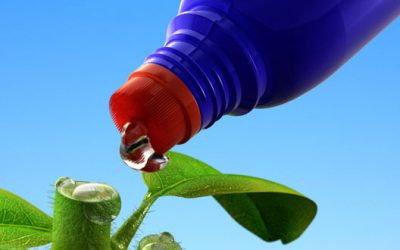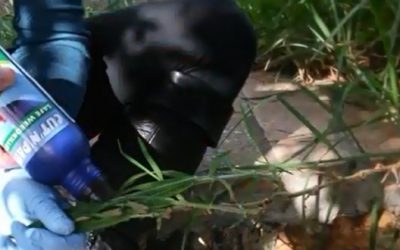Cut’n’Paste News
We are continually working to improve our product range. We have just released our latest product GLIMAX Professional for Glyphosate Max which is 450g/L of Glyphosate IPA salt, about as strong as you can get and designed for the professional weed control operative who knows on what and when to use it.
The days of wholesale spraying are over. We need to work smarter and weed gels are the answer. Put the herbicide where it belongs, in the weed, not on you or your neighbours.
Background to Cut’n’Paste
WeedHeke
Waiheke has a reputation of being the second weediest place on the planet after Hawaii and jokingly name Weedheke by biosecurity officers.
I’m very pleased to see that the Local Board has decided to take a well balanced approach to weed control in reserves on Waiheke. The recent methodology without using herbicides is having a disastrous effect on the health of native bush. Taking into due regard the concerns of those that feel that herbicides are unacceptable, the Board has agreed on an approach that minimises herbicides using manual methods where feasible and carefully targeted methods of application otherwise. Treescape Environmental is an excellent choice of contractors who has done such excellent work on Rotoroa restoring a very weedy environment using a similar approach.
Modern day Waiheke developed as a commuity of farmers and more lately holiday bach landowners, who, wanting some quick growing garden plants that stood the rigours of neglect between visits, introduced tough drought tolerant non native species from South Africa and South America. These could survive the rigours of summer and lack of care and proved excellent ground cover. Then through lack of attention, they were allowed to grow rampant. When the owners then periodically returned to their bachs, excess growth of these now weedy species ended up over the fence onto the neighbouring properties or the nearest reserve where they thrived happily and spread.
As more and more land has been retired from farming the bush regrew, infested with these same weedy species.
As the first ranger at Whakanewha Regional Park and later Biosecurity Officer for Waiheke, I was intimately, and often painfully, connected with the results of this first hand.
Some of the park neighbours and others on the island who were firmly against the use of herbicides made a gallant, but short term effort, to tackle the legion of weeds by hand. Michael O’Flarerty was one I remember who persevered much longer than most, until acknowledging that it was futile and saying you can’t do this by hand, it’s just too much. From that time on, a variety of other approaches were tried and adopted.
Sometimes it was simply better, more effective and easier to clear all vegetation and start again, replanting with natives as was done very successfully in many areas of Whakanewha and then minimal use of herbicides was needed to control the regrowth of weeds. Often the problem with herbicides is not the herbicide per se, but more the way in which it is used as well as the frequency. Whilst I was there, this work was carried out diligently and methodically with great results.
Now many years of a combination of sheer persistence and the careful use of targeted herbicides, the park is in many areas substantially weed free. Some weeds are best tackled manually in the main, such as moth plant. Others, like climbing asparagus for instance, cannot be successfully controlled by hand, unless you are willing to provide the funds and man power to sieve every inch of ground to remove the numerous tubers. In between these extremes are a wide range of options. A skilled and careful weed control specialist understands these issues and adapts techniques and methodologies to suit the weeds and circumstances, using manual methods where feasible, followed by targeted herbicide application and sprays where there is no other reasonable option.
I have had years experience of using herbicide gels and their safe application. Glyphosate is used an a wide variety of formulations, some of which are much more environmentally harmful than others. Roundup’s surfactant (detergent) formulation is very aggressive, so that it enters the plants system quickly. Using roundup repeatedly on an area of land is unwise as it reduces soil fertility over time by killing off first algae and then the food chain of organisms that depend on them. We don’t stop driving diesel cars or drinking wine, but these are proven carcinogenic chemicals that we either actively breathe in every day on the roads or are happy to drink quite regularly. We think that level of risk is acceptable because of the benefits.
Without the ability to use of combination of methodologies the weed problems on Waiheke are insurmountable. The option of do nothing is not one that any environmentally conscious person would choose. Unattended weed problems do not go away, they simple continue to spread futher and further and more and more densely.
Thank you again Waiheke Local Board for having the wisdom to take a balanced approach and for employing skilled contractors to use this kind of approach to restore Waiheke’s precious reserves.
Andy Spence
Your comments and feedback are welcome via our Facebook page Cut’n’Paste :
Recent Blog Posts:
Wild Ginger Control
Use our Cut'n'Paste MetGel on the cut stumps of the Ginger Rhizomes. Very easy and simple approach. Simply work from the bottom of a slope upwards as you cut and paste the stumps, throwing the debris behind you. Do be aware that metsulfuron will travel through wet...
Beat Oxalis with Cut’n’Paste Original Gel
Oxalis is a real nuisance when it gets into your garden, the bulbs spread like mad and are almost impossible to get rid of. Is Oxalis a problem on your property? No need to be.... Just wipe a little of the gel on the underside of the Oxalis leaves and in a couple...
Glimax Professional has been reformulated at 400g/L Glyphosate IPA salt
Glimax Professional has been reformulated at 400g/L Glyphosate IPA salt. Although this is a small decrease from the 450g/L we believe that this will perform better as the gel consistency makes the glyphosate more available to the plant's vascular system allowing...
Glyphosate Weed Gels are Safe to Use
Glyphosate is by far the safest and most environmentally friendly herbicide ever made. The problems with Glyphosate have arisen when it is used as a wholescale spray and used to spray glyphosate-resistant crops. This is the fault of Monsanto. They are responsible for...
Forest and Bird WeedBusters attacking broom at Whakaipo Bay in Taupo with Cut’n’Paste
PlaceMakers Hamilton now stock the full range of Cut’n’Paste weed Gels
Visit PlaceMakers Hamilton to get your Cut'n'Paste products. They now stock the full range of Cut'n'Paste weed Gels
Cut’n’Paste has a bright new logo
Sinclair Wetlands recommend Cut’n’Paste and Cactus Equipment Bumbags
G'day Andy. Nice to hear from you and to hear of your new products. I enjoy using your product and tidying our special wetland of the nasty weeds. The volunteers are happy and safe using your product. As you have already seen I have added many pictures to our facebook...
Cut’n’Paste sponsors Project De Vine
Project De-Vine - Working bee at Tata Peninsula – March 29th 2014 Over 20 people attended the working bee on Saturday at Tata Peninsula to help the owners of the hill there to start to clear the pest vines, banana passion vine and old man's beard, from the...
Wally Richards recommends Cut’n’Paste Weed Gel and Bamboo Buster
Cut’n’Paste new Radio Jingle by Pat Urlich ready for release in Mid January
Listen to our new Radio Advert due for airing mid January on TalkBack Radio with Ruud Kleinpaste
A happy customer who used Cut’n’Paste to kill Willows
Hi Andy, I used about 3 millilitres on each 90mm diameter willow stump. There was zero regrowth and i dug out the dead stumps about 2 months ago. Very pleased with the result, thanks Andy. regards Don Slater, at Kaiwaka
Cut’n’Paste on Mauke Cook Island courtesy by PII Pacific Island Initiative
The target invasive plant in this case is Java plum or Pistash (Syzgium cumini); planted as windbreaks for orange plantations but have taken over since the orange market (Raro orange juice) collapsed. Here Cut’n’Paste weed gel has a blue dye added for easier targetting of what has been completed
Cut’n’Paste killing Ginger in Hawaii!
Cut’n’Paste kills Ginger in Hawaii
Cut’n’Paste makes it to Hawaii
Cut'n'Paste has been used to deal to Hummingbird Ginger in Hawaii Unfortunately the herbicide regulations in the US are just too onerous for a small operator to get through. But you can always pop a couple of bottles in your luggage....
Kings St Lukes now stock Cut’n’Paste and Bamboo Buster
You can now go to any Kings Plant Barn store in Auckland and pick up your bottle of Cut'n'Paste or Bamboo Buster. Get Pasting and start Wasting!
Environmentally sound, highly effective weed control
Safe and Easy to use, Cut‘n’Paste is the silver bullet of weed control. Cut‘n’Paste brush on gel is used by DOC, and is available at most good Garden Centres. The brush applicator makes it convenient, safe and easy to use. “We highly recommend Cut ‘N’ Paste and are...
Cut’n’Paste and Bamboo Buster DOES NOT contain POEA surfactants
POEA (Polyethoxylated tallow amine) is commonly used in Glyphosates. Cut'n'Paste and Bamboo Buster use very reduced quantities of alkyl polyglocosite surfactants (3 - 5%). POEA has been traced to toxicity in native reptiles. [From Wikipedia the following A review...
Kings Plant Barns at Howick, Silverdale, Glenfield, Remuera, Forrest Hill and Henderson all selling Cut’n’Paste and Bamboo Buster
Pop on into your local Kings Plant Barn to pick up your Cut'n'Paste or Bamboo Buster. On sale now. Please ask for the products at other Kings Plant Barn if the product is not yet on their shelves. Below - one happy customer.
New and Improved
Due to improvements in the formulation of Cut'n'Paste and Bamboo Buster we are now able to offer you products with greater long term stability and more consistent quality. This is due to our ongoing product improvement program and four years of research into...
Cut’n’Paste and Bamboo Buster are now being sold at Henderson King’s Plant Barn
Kings Plant Barns
Cut'n'Paste will soon be available from King's Plant Barns in the Auckland Region.
Every Home Needs a bottle of Cut’n’Paste
No matter where you are Cut'n'Paste comes in useful whether it's for dealing to small weeds like Oxalis, Dandelions or thistles or whether it's Gorse, Tobacco Weed or Willow Trees.
Wally’s Garden Products Recommends Bamboo Buster
Bamboo Buster is here
Now you can buy the new Bamboo Buster on line. It is recommended that you use Bamboo Buster for some of the other really tough weeds such ad Chinese privet, acmena and gorse that tend to coppice heavily.
New video
Cut’n’Paste on Youtube
We are building up a substantial library of videos on our Cut'n'Paste YouTube channel, that may be of practical help in understanding the products and what they are good for. Please have a look around.
New Products
As well as Cut'n'Paste for weeds, we now have a new line for dealing to Bamboo. It's called Bamboo Buster. It's great for Chinese privet too and some of the other really nasty coppicing species ....


